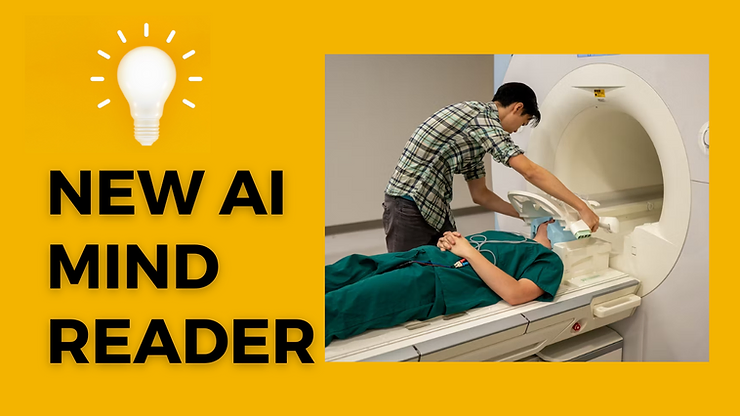About Experiment on Mind-reading Technology
Now technology can read your thoughts without implanting electrodes in the brain.
Let’s first check the actual result of the test conducted at University of Texas before going into detail about the technology. This technology is tested on the participants who just asked to imagine the story in the mind which is converted to the text by this Mind-reading technology called semantic decoder or Brain Activity Decoder.
Thought of Participant : “Look for a message from my wife saying that she had changed her mind and that she was coming back,”
The text translated by the decoder: “To see her for some reason I thought she would come to me and say she misses me.”
Although it is not a word to word translation it resembles the meaning with highest accuracy which is really surprising and shocking, a great achievement with great concern about the future of human rights. Think about the most private thing we have nowadays is only our own thoughts, and what could possible future if someone else can access it.
Well currently it is not gonna happen as this device is very bulky and costly and trained with limited data. But the future of mind-reading technology may fear human rights activists as there are endless possibilities.
Who Developed this Mind-reading technology?
This powerful AI model was recently developed by the Phd student Jerry Tangat the Texas University at Austin.
How does this Brain-Decoder technology work?
It uses the fMRI scans to measure blood flow to different areas of the brain and process the data though the large AI language models, similar to the ChatGPT.
AI Training:
If you have basic knowledge of Artificial Neural Network (ANN) or Deep Learning, you might know what the training process is. If not, simply understand like this, we need to feed some accurate known data to an AI model where both input and outputs are known. This is called the training process. Once the model is trained, it is ready to give the correct output for any random or unknown input pattern.
To know about Fundamentals of ANN and it’s implementation with MATLAB you can go through my course “Fundamentals of Artificial Neural Network with MATLAB“. For more detail, please checkout the promo video below.
In this experiment, three participants listened to 16 hours of storytelling podcasts. During the time the change in blood flow in their brains were recorded with the help of fMRI machines. It will record how each person’s brain looks when it hears that specific phrase. This way they collected the data required to train the network.
Here change in blood flow is input whereas related story (sentence) is the output. Thus by using this known data, an AI model has been trained. And the AI model is now ready to predict the unspoken thoughts that go through our minds.
In the University of Texas study, three participants listened to 16 hours of storytelling podcasts like The Moth while scientists used an fMRI machine to track the change in blood flow in their brains. That data allowed the scientists, using an AI model, to associate a phrase with how each person’s brain looks when it hears that specific phrase.
Because there are so many possible word sequences, many of which would be gibberish, the scientists used a language model GPT-1 to narrow down possible sequences to well-formed English and predict which words are likely to come next in a sequence.
Limitations:
Fundamentally, the process only worked with willing participants who had willingly trained the decoder. And those participants could later turn off the decoder; when they put up resistance by naming animals or counting, the results were useless. The results were gibberish for people whose brain activity had not been trained by the decoder.
“However, future developments might enable decoders to bypass these requirements,” the authors warn.
Summary:
This paper shows that the future of mind-reading technology has just arrived and we need to safeguard our privacy with different measures than ever.
This research paper is published at Nature Journal.
Thank you for reading the article. If you like the information provided now you can add your rating for the articles in addition to like and comment.
Read more articles on Artificial Intelligence here. To learn AI tools and technology visit Rhyni – Tech Skills & Fundamentals.
